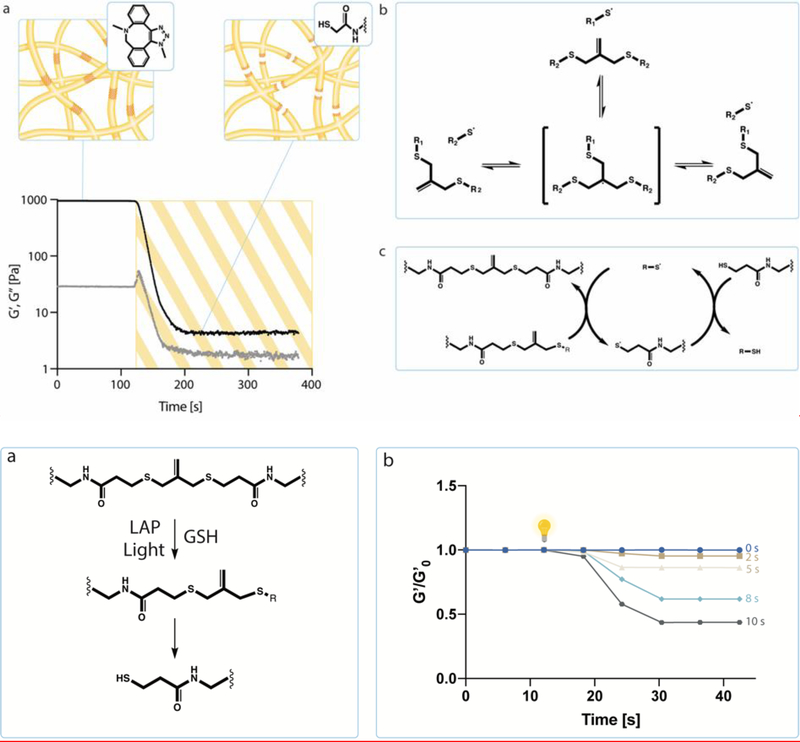Figure 2.
a) Hydrogel network degradation initiated by free radicals. Allyl sulfide bis(azide) reacts with thiyl radicals to form a radical intermediate that undergoes beta scission. This results in the fragmentation of crosslinks and the regeneration of the thiyl radical and allyl sulfide bis(azide). A soluble thiol species (glutathione) exchanges with the allyl sulfide bis(azide), therefore producing a cleaved crosslink and a network tethered thiyl radical. The released network thiyl radical undergoes chain transfer to a soluble thiol species, which can initiate further exchanges, creating an amplified degradation process. b) Hydrogels that were swollen with glutathione and LAP were irradiated with 365 nm light, creating a range of soft conditions that varied from around 500 Pa to 1.3 kPa.

